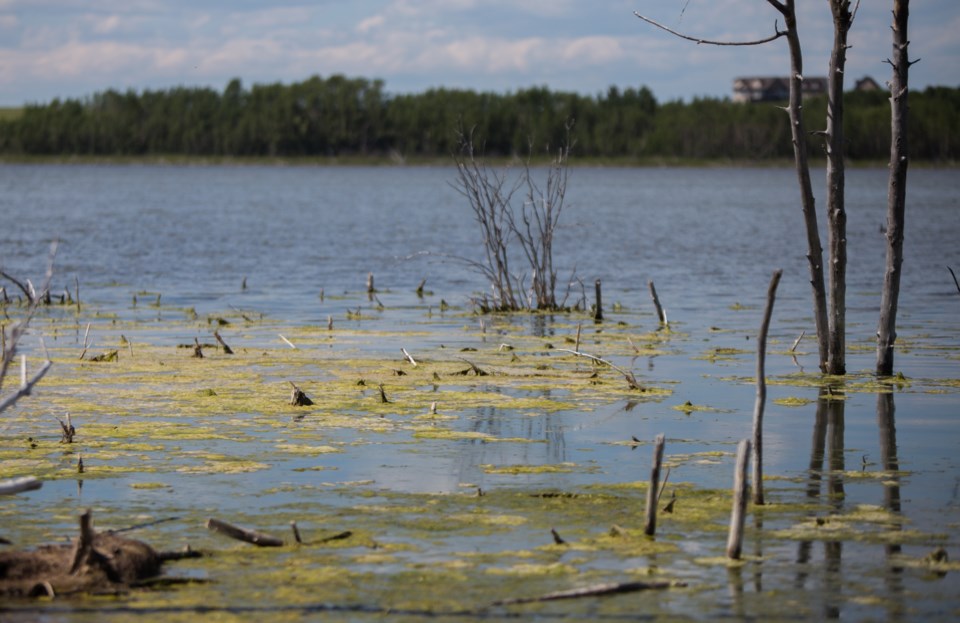An Alberta Health Services (AHS) advisory issued this summer warning Albertans of a possible threat from blue-green algae blooms (or cynobacteria) in Cochrane Lake has been lifted, effective Nov. 1.
The announcement coincides with cooler temperatures felt throughout Alberta, resulting in a drop in temperature in three bodies of water that had previously been placed under blue-green algae bloom advisories.
According to Kieran Steer, senior resident physician working with the medical officer of health for the AHS Calgary Zone, the colder temperatures have lowered the health risk of any blue-green algae that might have been present in Cochrane Lake earlier this year.
“Typically, within the summer months, when the temperature is warmer, blue-green algae can grow significantly because the conditions become optimal for it,” he said. “When it grows in significant amounts, it causes blue-green algae blooms.”
Blue-green algae blooms are a naturally occurring cynobacteria comprised of several million micro-organisms, according to AHS.
Steer said when people come into direct contact with the blue-green algae blooms, it can cause a variety of adverse reactions.
“Health effects [include] irritation of the skin, and when blue-green algae is [found] in significant amounts in the water, any consumption of the water can have additional health effects from gastrointestinal upset to nausea, vomiting, or diarrhea,” he said, adding other significant health maladies can occur “if consumed in significant amounts.”
When a blue-green algae advisory is issued for a certain body of water, AHS advises Albertans to avoid contact with the algae, and to restrict their consumption of fish within that water source to avoid an accumulation of the harmful cynobacteria.
Visitors and residents are also encouraged to refrain from drinking or cooking with untreated water from any recreational body of water, at any time of the year.
“We always ask that if people think they see a blue-green algae bloom, to avoid contact with that bloom, both themselves and animals,” Steer said. “They can also contact environmental public health within AHS [and] we can investigate whether there is a bloom there or not.”
He added an algae bloom in fall or winter would be unusual, as it is typically warmer seasons that provide the conditions necessary for blue-green algae blooms to grow. But he added for people to keep an eye out for any advisories next spring and summer.
“We can never tell for sure whether there’ll be a bloom or not next summer, but there may be, so people can take those extra precautions and visit the health advisories website if they want before using the lake,” he said.
Carmen Cundy, AirdrieToday.com
Follow me on Twitter @carmenrcundy



